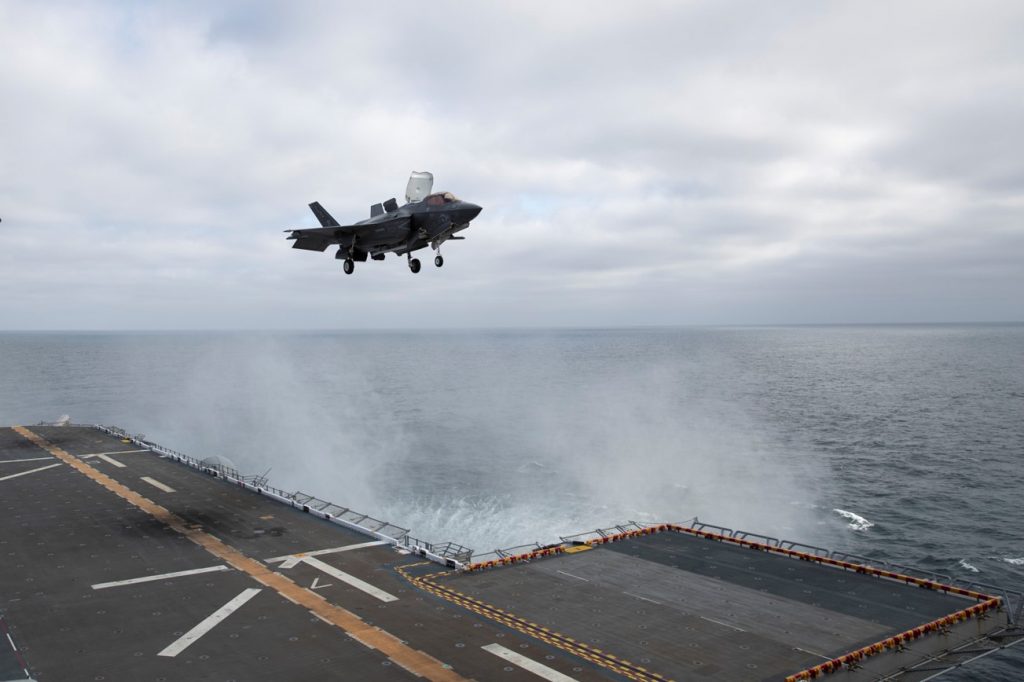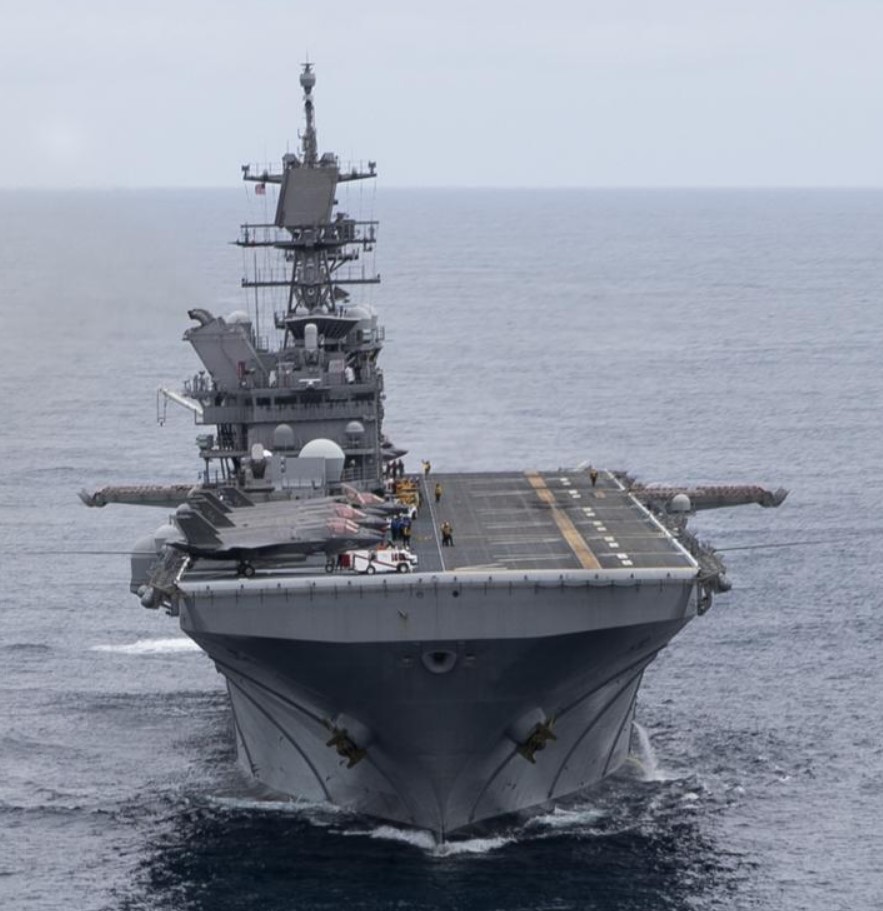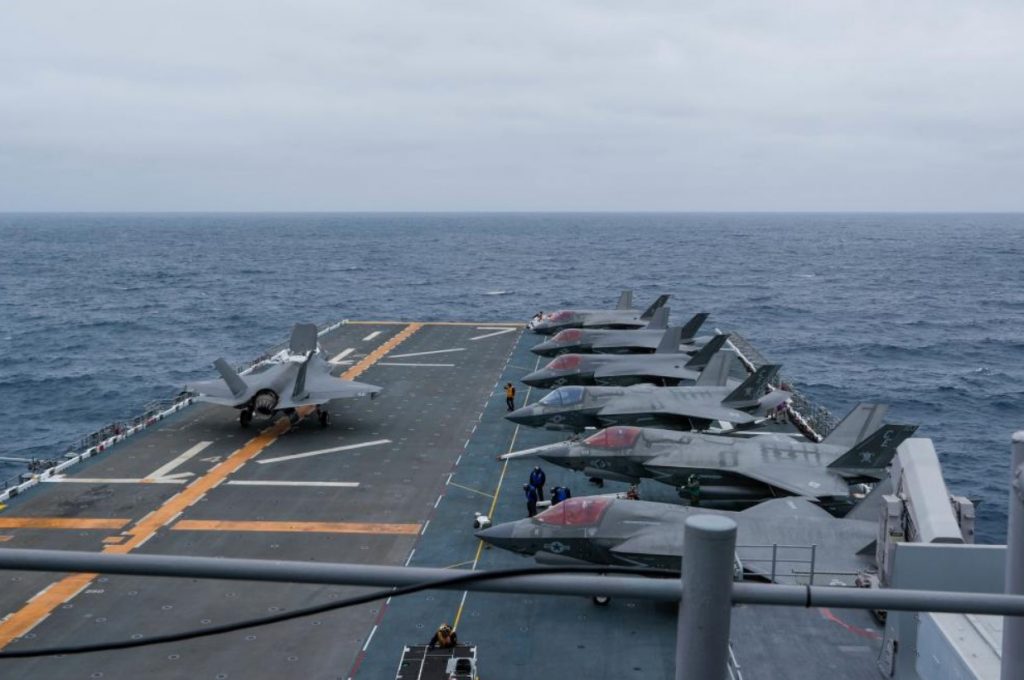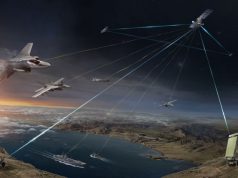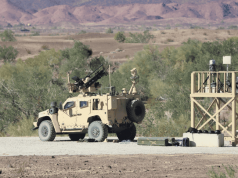
US Marine Corps F-35B fighters from three squadrons have tested the Lightning Carrier Concept with 20 of the short takeoff-vertical landing (STOVL) aircraft onboard amphibious assault ship USS Tripoli (LHA 7).
The test began late March and showed Tripoli and other amphibious assault ships are capable of operating as dedicated fixed-wing carrier platforms, according to the service.
USMC added that the demonstration showed America-class ships are capable of bringing fifth generation STOVL aircraft wherever they are required.
While this is not the first time the concept of turning the aviation-centric assault ships into light aircraft carriers, it is the first time the demonstration has been conducted at such a scale.
USS America, the ship of the America-class amphibious assault ships, demonstrated the concept for the first time in 2016 with 12 F-35B. In 2019, the ship was seen with 13 F-35Bs during operations in the Pacific ocean.
The latest demonstration featured 16 jets from Marine Aircraft Group (MAG) 13, 3rd Marine Aircraft Wing, with an additional four from Marine Operational Test and Evaluation Squadron 1, all operating from USS Tripoli at a high tempo.
USS Tripoli hosted the demonstration less than three months after the first F-35B Lighting II from VMFA 122 touched down on the ship’s flight deck since its entry into service in 2020.
It should be noted that the latest demonstration trumps the number of F-35B aircraft that were operated by the Royal Navy aircraft carrier HMS Queen Elizabeth during its maiden deployment last year. During the UK carrier’s deployment, ten F-35Bs from VMFA-211 were onboard the carrier, bringing the total number of fifth-generation fighters deployed onboard the ship to 13.
The demonstration proved that an assault carrier can be a lethal addition and provides combatant commanders with more options when employed in creative ways.
An earlier concept utilized amphibious assault ships to demonstrate the “Harrier carrier” concept for AV-8B Harriers.
The navy said the concept would not change the standard make-up of an Amphibious Ready Group and Marine Expeditionary Unit (ARG/MEU). However, the exercise demonstrated the potential to utilize amphibious assault ships to provide the naval and joint force with lethal access, collection, and strike capabilities from fifth generation Short Takeoff/Vertical Landing (STO/VL) aircraft in future operations.
“This demonstration proved the versatility of the America-class assault carrier, with its ability to embark either two squadrons of F-35Bs and a MAG command element, or a battalion-sized landing force and the associated assault support [12 MV-22B Ospreys, four CH-53E Super Stallions, and six F-35B Lightning II],” said US Navy Capt. Joel Lang, Tripoli’s Commanding Officer. “For the fleet commander, both options are formidable and sustainable.”
Both USS Tripoli and USS America are specifically designed to enhance Marine Corps aviation, allowing the operation of tilt-rotor MV-22 Ospreys and the F-35B from its flight deck. Compared to conventional amphibious assault ships, the first two America-class ships sacrifice the well deck in favor of an enlarged hangar deck, realignment and expansion of the aviation maintenance facilities, a significant increase in available stowage of parts and equipment and an increased aviation fuel capacity.
Future USS Bougainville (LHA 8), the third America-class unit, will be the first Flight I ship, reincorporating a well deck to enhance expeditionary warfighting capabilities while maintaining the principal aviation characteristics of the Flight 0 ships.

















